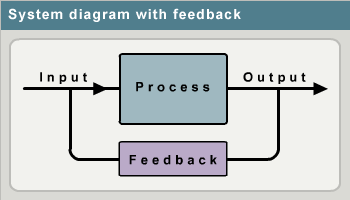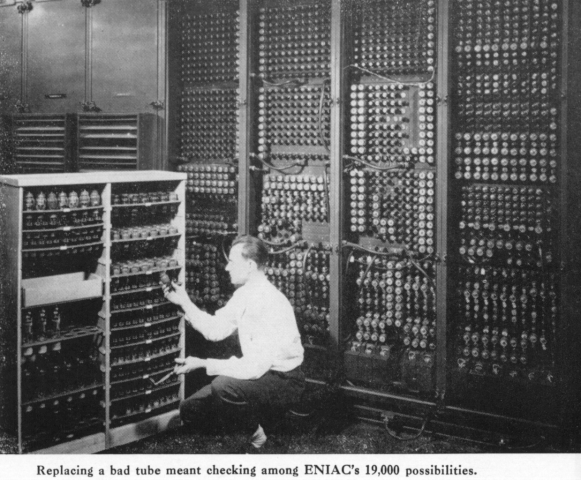 Each occupation has their own basic principles or laws of nature they base their craft on. Engineers have Newtonian and relativistic physics. Medical doctors have molecular biology. By understanding natural laws we are able to send people to the moon, perform heart transplants, and cure diseases. If we were able to bring someone who lived 200 years ago into the present and show them what we have accomplished they might think we had special magical powers. We assign the words ‘magic’ or ‘special ability’ to things that seem unexplainable to us. That is why some leaders are described as having the ‘it’ factor, or the ‘magic touch’. We don’t really understand very well the basic laws of nature that govern management so we think it is magic when it works. In reality, they are just following basic principles which lead to desired outcomes.
Each occupation has their own basic principles or laws of nature they base their craft on. Engineers have Newtonian and relativistic physics. Medical doctors have molecular biology. By understanding natural laws we are able to send people to the moon, perform heart transplants, and cure diseases. If we were able to bring someone who lived 200 years ago into the present and show them what we have accomplished they might think we had special magical powers. We assign the words ‘magic’ or ‘special ability’ to things that seem unexplainable to us. That is why some leaders are described as having the ‘it’ factor, or the ‘magic touch’. We don’t really understand very well the basic laws of nature that govern management so we think it is magic when it works. In reality, they are just following basic principles which lead to desired outcomes.
The Laws of Management
What basic principles do managers use? The fundamental building blocks of teams and organizations are the basic principles of human behavior. Our organizations are all governed by these laws irregardless of whether they knowingly accept them. I like to think of it like a system with inputs and outputs. The inputs go into the system and the system produces a change upon the inputs to produce an output.

It is the interaction of rules, processes, culture, and these natural laws that combine to create a system that churns out not only work products; but attitudes, beliefs, and different behaviors than those which were input into the system. Ilana Yurkiewicz wrote about this phenomenon when she wrote about how medical residency systems change people, “We can’t ignore a system that takes loads of formerly ‘nice’ people and churns out jaded, bitter, and gruff ones.” These systems are consistent in their results, and by looking at the laws that govern them their results may be predicted.
People Are Predictable
What it comes down to is this – people are predictable. Sure, their is a random element to human behavior, and there are a lot of variables that effect human behavior, but in most circumstances behavior can be traced to an explainable cause and effect. I am not a psychologist nor a neurologist, so I am not going to go into great detail of why human behavior is predictable. I feel very uncomfortable even touching on these subjects because I feel like I lack the authority to do so. I am going to try stick to basic principles that are for the most part widely accepted and proven. If I am mistaken in anything please provide feedback to me so that I may research it more in depth and correct my mistakes.
The Drive to Survive
Human beings are governed by some basic ‘drives’. We have complex internal feedback systems which reward us when something they decide is good has occurred, or they warn us when something is bad or a threat. Most of these drives, or feedback systems operate under the surface of our consciousness. They are there without us knowing they are there. Some of these drives govern our survival, like our fight or flight response when a threat is detected, or when we have certain reactions to the sight of someone who is attractive to us. These basic instincts reside in what some call the ‘animal’ or ‘primitive’ part of our brains. They are hard-wired and are practically impossible to get rid of or suppress. In fact, sometimes we might want to suppress them because they are not helpful, such as feeling a threat response as a result of having to speak in front of a large group. When this part of the brain is active it takes over and we find it very difficult to think and behave normally. We not only go into fight or flight mode when we run into a lion or a masked gunman, but it happens most often when we are threatened socially. David Rock has come up with an effective model to describe the things that make us feel threatened, thus activating our animal brain and turning off our thinking brains. It is called SCARF and it stands for status, certainty, autonomy, relatability, and fairness. This model deserves its own post, so I won’t get into it that much here. To summarize, when any of these things are compromised in our own minds we react in a similar way as we would react if we were to hear a lion’s roar nearby. We usually don’t associate being passed over for a promotion as a threat to our survival, but that is how our brain reacts because it is a threat to our status. Our work environments are full of these threats, which in turn increase stress and decrease productivity because critical thinking is hampered.
Carrots and Sticks
The next level of principles that guide human behavior are derived from the father of economics, Adam Smith. He believed that human beings are motivated by their own self-interest and that when an individual acts in his or her own self-interest they indirectly benefit society.
It is not from the benevolence of the butcher, the brewer, or the baker, that we expect our dinner, but from their regard to their own interest. – Adam Smith
The theory is that we work only because we gain resources (food, money, etc.) which benefit ourselves, and to avoid consequences (loss of money and food) which would be detrimental to ourselves. This is sometimes called carrots and sticks, or reward and punishment. Many of our contemporary work environments are based primarily on these principles. Research has proven that rewards and punishments are only effective in certain situations, particularly when tasks are repetitive and uninteresting. They were extremely effective for motivating workers as the industrial era progressed. You offer pay for menial and repetitive work that nobody would ever perform voluntarily, and if they refused they lost their pay and starved. The industrial era is also where another outdated management tool originated – the time clock as a means to measure work. The problem is that we still use money as the primary motivator for work while the nature of most work has changed. Most jobs are no longer menial, repetitive, assembly-line type jobs. They are service oriented where creativity and thinking on your feet are highly prized. Yet we still manage people like they are working on an assembly line. We pay them by the hour, we treat them as a resource, or as a pawn to use and move as we wish in a larger game. It may be true that we wouldn’t go to work if we didn’t get paid, but all we need is a salary that is on par with our peers and that is enough to meet our needs. Or as Daniel Pink put it, “The best use of money as motivator is to pay enough, to take money off the table.” Bonuses and other rewards actually demotivate us when our work is interesting by its own merits. If we want to motivate people we’ll have to explore other methods.
The best use of money as motivator is to pay enough, to take money off the table. -Daniel Pink
Higher Drives
In his book ‘Drive’, Daniel Pink describes the drive to survive and find a mate as motivation 1.0, and the drive to seek rewards and avoid punishments as 2.0. Motivation 3.0 includes other drives for motivation which are largely ignored by managers of today. These drives include the desire to improve the world around us and make a difference, the desire to improve ourselves – to learn about the world and to seek novelty, and the desire to gain more control over our lives, our work, and our time. The problem is that these drives are more delicate than the instinct we have to survive, largely because any time our need to survive is aroused – the brain gives it first priority. The desire to improve the world around us can be squashed if you are assigned a reward for doing so. The idea that rewards can decrease motivation is counter-intuitive, but it is one of the most proven concepts out there. However, there is a caveat – the activity must be intrinsically rewarding. Meaning that there is a significant amount of value in the activity by its own merits. The good news is that many jobs nowadays fit into the category of being interesting on their own. Engineering is interesting because of the problem solving involved and the ability to create things. Medical occupations could be made more interesting if people were allowed and encouraged to research and explore more. I don’t mean that they should experiment on their patients with unproven treatments and drugs, that would be illegal and for good reason. I mean thay should treat each situation like a puzzle, having time to do research on their own, and sharing and talking about what they found with their coworkers. Imagine Nursing assistants, nurses, and doctors gathering around sharing insights and knowledge. Nursing assistants would have extra motivation to work because of the knowledge they would receive, which would improve quality by having a better idea of what to look for and why. This would give nurses and doctors useful information and feedback about patients, while also benefiting them by making their jobs less routine and more of a growth opportunity. This is a low cost way to provide better service and job satisfaction. By using the drive to learn, I believe we would increase the quality of treatment and the job satisfaction of each employee. This same pattern could be applied to corporate jobs, manufacturing jobs, and service jobs. Even government jobs could be made more interesting.
The Need to Learn
The desire to learn is often neglected at work and even in our schools. We approach learning like an industrial process. When in reality it is more of an organic process that takes a lot of curiosity and time. We send employees to training courses and workshops where they spend most of their time sitting passively while an instructor talks. Then we expect them to be able to not only retain everything that was said, but also how to implement it effectively. Knowledge isn’t something that you can cram into someone’s brain with a shovel. It needs to be placed there carefully by the owner of that brain one piece at a time. When done correctly learning is interesting, it is fun, and incredibly effective; but learning is not fun when it is forced, accompanied by time and performance pressures, and rigid in structure. People need the freedom to explore and to make mistakes, they need time to wander around a subject of their own interest. Yet, in our work places their is such a high premium on avoiding mistakes and looking busy that real learning and creativity is nearly impossible. We define what they will work on, where to work on it, how long they have to work on it, and in many cases how they will accomplish the thing we’ve assigned them to do. That is the wrecking ball of creativity, and of autonomy. We are wired for curiosity and novelty. We need to learn how to nurture that need so that it can grow on its own. People will learn new skills on their own if given the time and resources to do so. They will develop creative solutions and make new discoveries if we give them the freedom to make mistakes and to do their own work how, when, and where they like.
Autonomy
Having control over our work and time is called autonomy. It is part of David Rock’s SCARF model, a lack of autonomy is processed as a threat to our brains. Autonomy is also recognized as a motivator. People are happier while working longer hours and under more pressure when they own their own business. Best Buy had taken advantage of this concept by creating ROWEs or Results-Oriented-Work-Environments. Only to have new leadership cut it down. When I was working as a painter’s helper as a summer job while attending college I worked in a ROWE-like environment. The boss, a southern man by the name of Dean, taught me how to use a paint roller correctly and how to fix my mistakes. He checked up on my work periodically to make sure I was doing it right and to give correction when needed. I had so many rooms to paint each day, and when I was finished I got to go home. The thing is, I got paid the same for every day whether I took 5 hours or 10 hours. I worked faster and Dean made sure the quality was still there. To be a true ROWE I would have come in to work when I wanted, whether it was at noon or midnight, but that wouldn’t have made sense in this situation. The point is that giving people more autonomy over their work increases employee satisfaction and productivity, while reducing stress. Dean may not have made any more money or have finished the job any faster by running his operation this way, but he had less turnover, and a crew that was more committed to the job. Micromanagement means less autonomy and builds resentment which leads to higher turnover. Autonomy leads to greater involvement and commitment which leads to lower turnover and greater productivity in the long run. Autonomy does not mean that you cut your employees loose and let them figure out how to get the job done on their own. It is even more important when giving people autonomy that you provide clear expectations, mentoring, coaching, and resources. Each person and each task will require a different amount of involvement between manager and employee.
Tailor to Your Needs
I could go much more in-depth on each of these principles, and I will in future posts. These are the fundamentals, the basics of how an organization runs. By understanding these principles we can tailor each situation to create the environment that will produce the results that we want. It may be that if we want people to work as fast as they can and we don’t care if they turn off their brains. If this were the case we would purposely provide external threats to get their brains to go into a fight or flight mode. By understanding these principles we would also be able to think about how long we could maintain those methods before people break down, and what long-term effects it will have on them. We could tailor the rest of the environment to minimize those negative effects and design around them. The point is that by understanding these principles we turn the magic into a trick that we also can perform. It turns something that is seen as requiring natural ability into something everyone can do..


